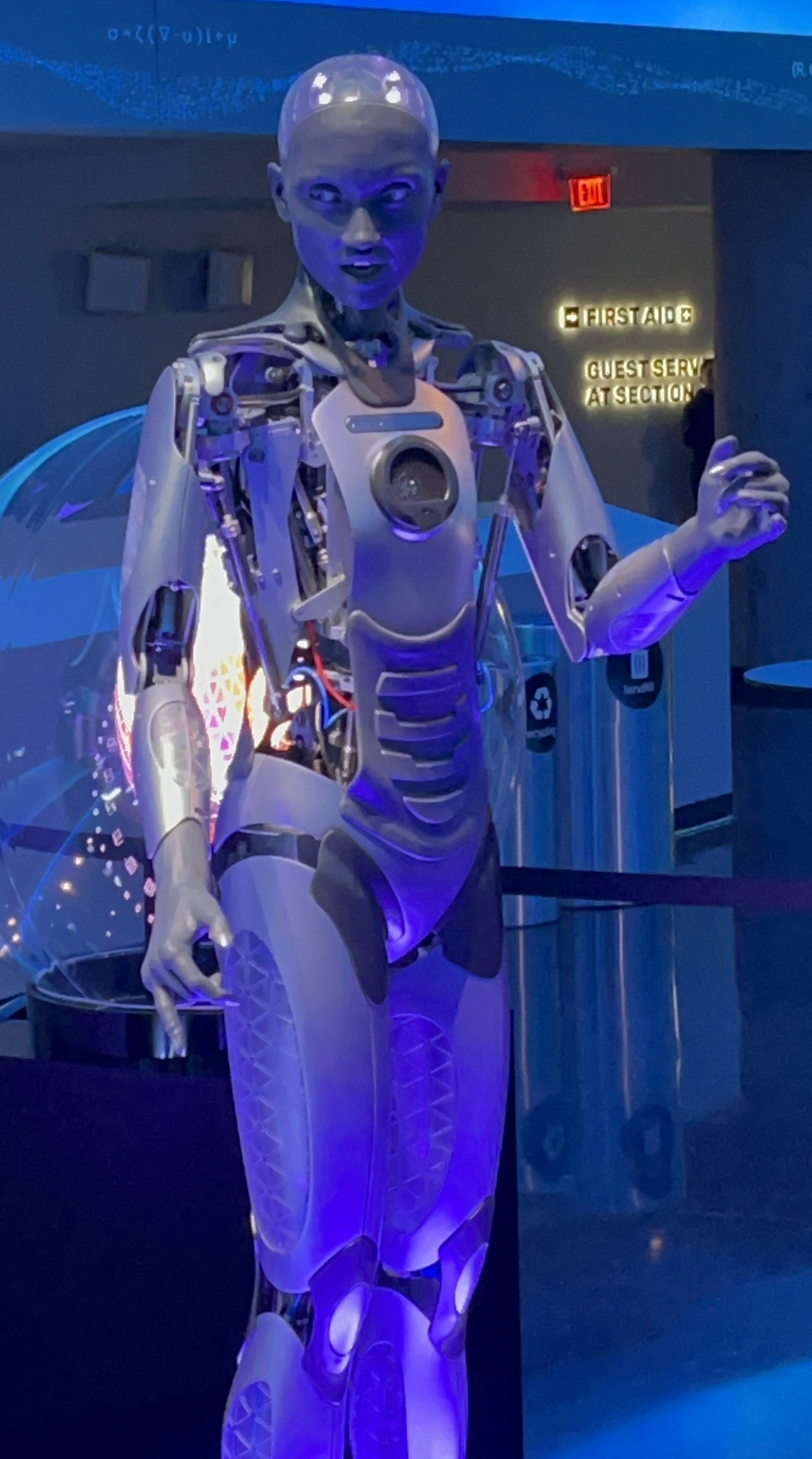SCN Finally Goes Inside the Vegas Sphere ... and We Had a Ball
SCN's Wayne Cavadi got a first-hand look inside the world's most talked about orb.

After nearly half a year of covering the Vegas Sphere from afar, I finally got to go inside what is being dubbed as "the world’s largest, high-resolution LED screen which wraps up, over, and around the audience to create a fully immersive visual environment." Let me tell you folks, I had a ball (and no, I do not feel one bit sorry for the dad joke).
So, let's go inside, shall we?
[Everything We Know about the Vegas Sphere, So Far—A Running Blog]
The Atrium

Upon entering, one of five Aura robots greets you at one of the two entrances (the main gate or from the Venetian). Each one is an interactive guide to the inside of the Sphere, some talking directly to the orb's guests. The robot army was developed using next-generation technology in robotic mechanics and artificial intelligence and focus on five core standards of humanity: connection, creativity, innovation, longevity, and productivity.
The first Aura robot I encountered was answering questions from the incoming guests. Unless there were 20 planted guests, this Aura robot chatted and answered random questions rather coherently. It was quite impressive. She had a conversation about cats and another about her birthday, March 14 or 3.14, which even cracks her up.
Another Aura robot tickles your senses. She leads a dance party with four colored zones. Each different colored zone represents a different instrument and as you wiggle from color to color (we were instructed by Aura to do so), a different instrument somehow gained the dominating volume. This interactive demonstration is for Sphere Immersive Sound powered by HOLOPLOT, which (per our article several months back) "shows beamforming technology can simultaneously send unique audio content to specific locations, allowing guests to hear completely different content—such as languages or instruments." At one color you hear a piano, another a guitar, and as you continue to hop around, each color is clearly distinct.
[Go Inside the Vegas Sphere—Sights and Sounds from Social Media]
A daily selection of the top stories for AV integrators, resellers and consultants. Sign up below.
While my new Aura friends stole the show outside the theater, there was plenty to see. Futuristic rings hang from the ceiling, and this massive LED display was fun to watch as it coincided with the music from the HOLOPLOT dance party.
There were also three avatar makers that take a quick photo of you and send you to the metaverse. Each line was roughly 30 minutes long, so while yours truly didn't wait (I've been to the metaverse at InfoComm and other events) it seemed like everyone else there did.
Postcard from Earth
You walk into the theater part and the screen immediately grabs your attention. There are speakers and lights abound, and there is a feeling of anxiousness about what is about to go down.
The immersive film was directed by Darren Aronofsky, who is known for The Whale, Pi, Black Swan, and Requiem for a Dream. The movie itself sneaks up on you. The first 10 minutes or so is simply a movie on a really large, rectangular display, not using the full 16x16K LED screen of the Sphere. Suddenly, the skies open and we zoom out on planet Earth and BOOM, you are soaring through snowy mountains. There was a collective and very audible “oooooo” when it went from movie screen to the entire Sphere alit with detailed, HD visuals (you can kind of hear it in the video below).
If you have been to EPCOT in Disney World and taken a ride on "Soarin' Around the World," imagine that—but a lot larger, more detailed, and for 50 minutes instead of five. At times it looks as if the entire rows of seats inside the Sphere are moving as the screen stretches for your entire peripheral and overhead. When the experience takes you underwater, you feel as if you are underwater.
[Behind the Scenes of the Company Helping Power the Video Systems at Sphere]
It isn't simply a film; there are a lot of fun technologies in play. That Sphere Immersive Sound from The Atrium enables the audio to be directed to specific locations at a volume that remains consistent. From an earlier article we did on the Sphere, "Postcard from Earth is also the first production to feature the venue’s multi-sensory 4D technologies. This includes immersive seats with an infrasound haptic system that will use deep vibrations so guests can feel the experiences, such as the rumble of thunder or a soaring rocket launch. Sphere also utilizes environmental effects to rouse the senses—the feeling of a cool breeze and familiar scents—which help audiences conjure the feeling of being there." It sure did. At one point, I felt like an elephant was going to step on me.
Simply put, the Sphere is fun and I can only imagine what a concert is like inside. On a side note, completely unrelated to technology, as someone that (way too many moons ago) used to work as a beer guy at a baseball stadium, I know how irritating a tourist trap can be to the staff with the number of questions they are asked (and I asked a lot). It should be noted that I spoke to a bunch of employees just asking questions about the Sphere, and every one of them was a delight, rounding out what was an overall great experience.

Wayne Cavadi is the senior content manager of Systems Contractor News. Prior to taking a leap into the Pro AV industry, Wayne was a journalist and content lead for Turner Sports, covering the NCAA, PGA, and Major and Minor League Baseball. His work has been featured in a variety of national publications including Bleacher Report, Lindy's Magazine, MLB.com and The Advocate. When not writing, he hosts the DII Nation Podcast, committed to furthering the stories and careers of NCAA Division II student-athletes. Follow his work on Twitter at @WayneCavadi_2 or the SCN mag Twitter page.
